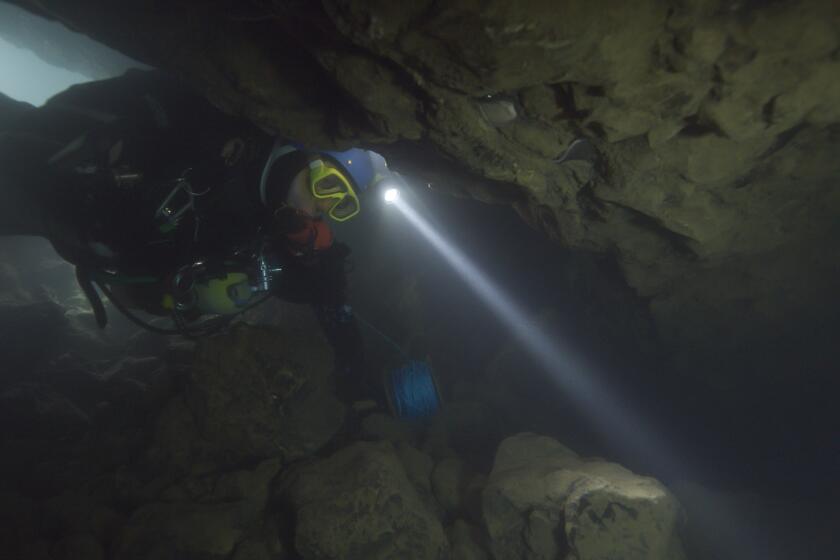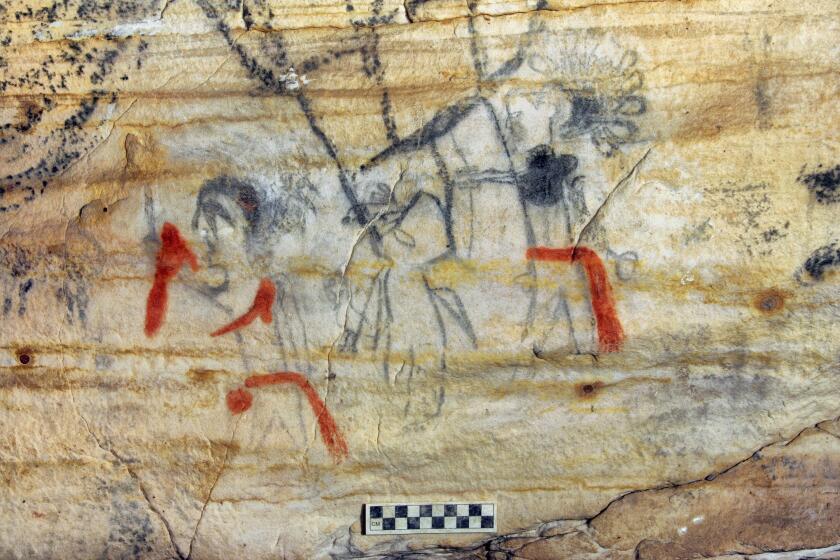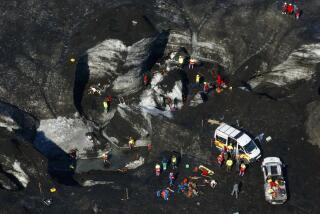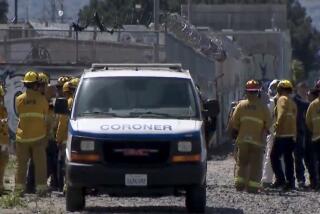Rescue efforts underway for ailing American trapped 3,300 feet deep inside Turkish cave
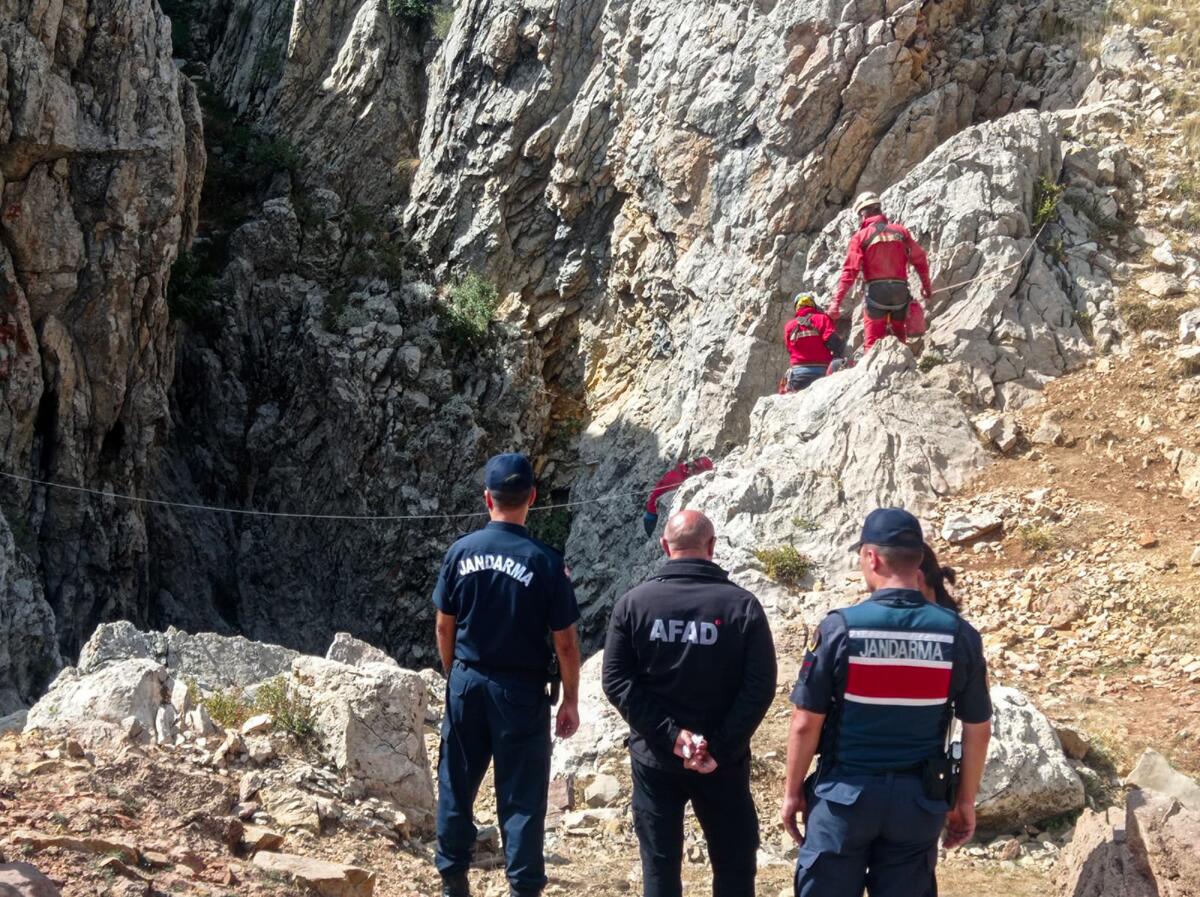
- Share via
ISTANBUL — Rescuers from across Europe rushed to a cave in Turkey on Thursday, launching an operation to save an American researcher who became trapped about 3,000 feet below the cave’s entrance after suffering stomach bleeding.
Experienced caver Mark Dickey, 40, suddenly became ill during an expedition with a handful of others, including three other Americans, in the Morca cave in southern Turkey’s Taurus Mountains, the European Cave Rescue Assn. said.
Although rescuers, including a Hungarian doctor, have reached and treated Dickey, it could be days and possibly weeks before they are able to get him out of the cave, which is too narrow in places for a stretcher to pass through.
In a video message from inside the cave and made available Thursday by Turkey’s communications directorate, Dickey thanked the caving community and the Turkish government for their efforts.
“The caving world is a really tight-knit group and it’s amazing to see how many people have responded on the surface,” said Dickey. “ ... I do know that the quick response of the Turkish government to get the medical supplies that I need, in my opinion, saved my life. I was very close to the edge.”
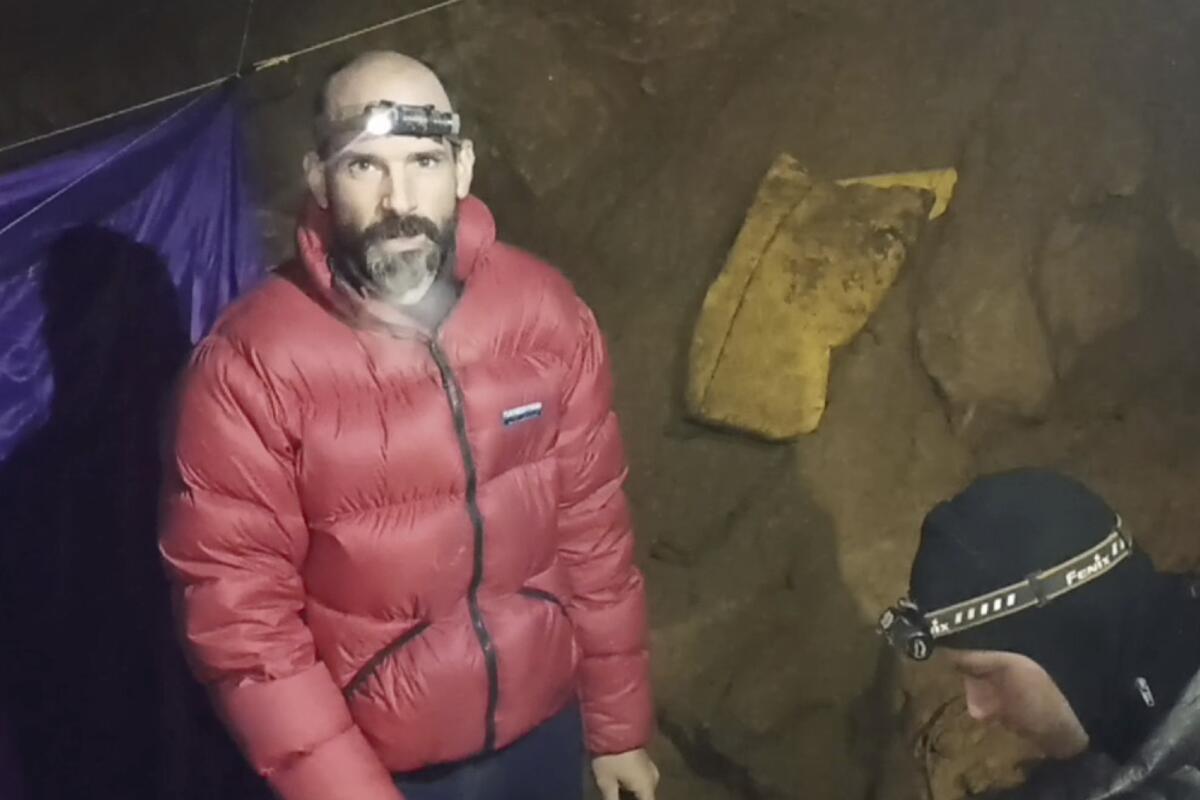
Dickey, who is seen standing and moving around in the video, said that although he is alert and talking, he is not “healed on the inside” and will need a lot of help to get out of the cave. Doctors will decide whether he will need to leave the cave on a stretcher or if he can leave under his own power.
Dickey, who had been bleeding and losing fluid from his stomach, has stopped vomiting and has eaten for the first time in days, according to a New Jersey-based cave rescue group he’s affiliated with. It’s unclear what caused his medical issue.
Oscar-winning ‘Free Solo’ directors E. Chai Vasarhelyi and Jimmy Chin turn their attention to another incredible story in ‘The Rescue.’
The New Jersey Initial Response Team said the rescue will require many teams and constant medical care. The group says the cave is also quite cold — about 39 to 42 degrees.
Communication with Dickey takes about five to seven hours and is carried out by runners, who go from Dickey to the camp below the surface where a telephone line to speak with those at the surface has been set up.
Experts said it will be a challenge to successfully rescue Dickey.
Yusuf Ogrenecek of the Speleological Federation of Turkey said that one of the most difficult tasks of cave rescue operations is widening the narrow cave passages to allow stretcher lines to pass through at low depths.
Stretcher lines are labor intensive and require experienced cave rescuers working long hours, Ogrenecek said. He added that other difficulties include navigating through mud and water at low temperatures and the psychological toll of staying inside a cave for long periods of time.
A Missouri cave containing Native American artwork from more than 1,000 years ago has been sold at auction
Marton Kovacs of the Hungarian Cave Rescue Service said that the cave is being prepared for Dickey’s safe extraction. Passages are being widened and the danger of falling rocks is also being addressed.
Turkish disaster relief agency AFAD and rescue team UMKE are working with Turkish and international cavers on the plan to hoist Dickey out of the cave system, the European Cave Rescue Assn. said.
The rescue effort currently involves more than 170 people, including doctors, paramedics who are tending to Dickey and experienced cavers, Ogrenecek said, adding that the operation could take two to three weeks.
The operation includes rescue teams from Bulgaria, Croatia, Hungary, Italy, Poland and Turkey.
Dickey was described by the association as “a highly trained caver and a cave rescuer” who is well known as a cave researcher, or speleologist, from his participation in many international expeditions. He is secretary of the association’s medical committee.
He was on an expedition mapping the 4,186-foot-deep Morca cave system for the Anatolian Speleology Group Assn. before he became sick around 3,300 feet deep, according to Ogrenecek.
Dickey initially became ill on Sept. 2, but it took until the morning of Sept. 3 to notify others who were above ground.
Justin Hanley, a 28-year-old firefighter from near Dallas, said he met Dickey a few months ago when he took a cave rescue course Dickey taught in Hungary and Croatia. He described Dickey as upbeat and as someone who sees the good in everyone.
“Mark is the guy that should be on that rescue mission that’s leading and consulting and for him to be the one that needs to be rescued is kind of a tragedy in and of itself,” he said.
Start your day right
Sign up for Essential California for the L.A. Times biggest news, features and recommendations in your inbox six days a week.
You may occasionally receive promotional content from the Los Angeles Times.
A team of rescuers from Italy’s National Alpine and Speleological Rescue Team will be flying to Turkey on Thursday night. A total of about 50 rescuers will be at the cave entrance early Friday ready to participate in the operation directed by Turkish authorities.
The rescue teams hope that the extraction can begin Saturday or Sunday. Kovacs said that lifting Dickey will probably take several days, and that several bivouac points are being prepared along the way so that Dickey and rescue teams can rest.
The cave has been divided into several sections, with each country’s rescue team being responsible for one section.
The Hungarian Cave Rescue Service, made up of volunteers, was the first to arrive at Dickey’s location and provided emergency blood transfusions to stabilize his condition.
More to Read
Sign up for Essential California
The most important California stories and recommendations in your inbox every morning.
You may occasionally receive promotional content from the Los Angeles Times.
